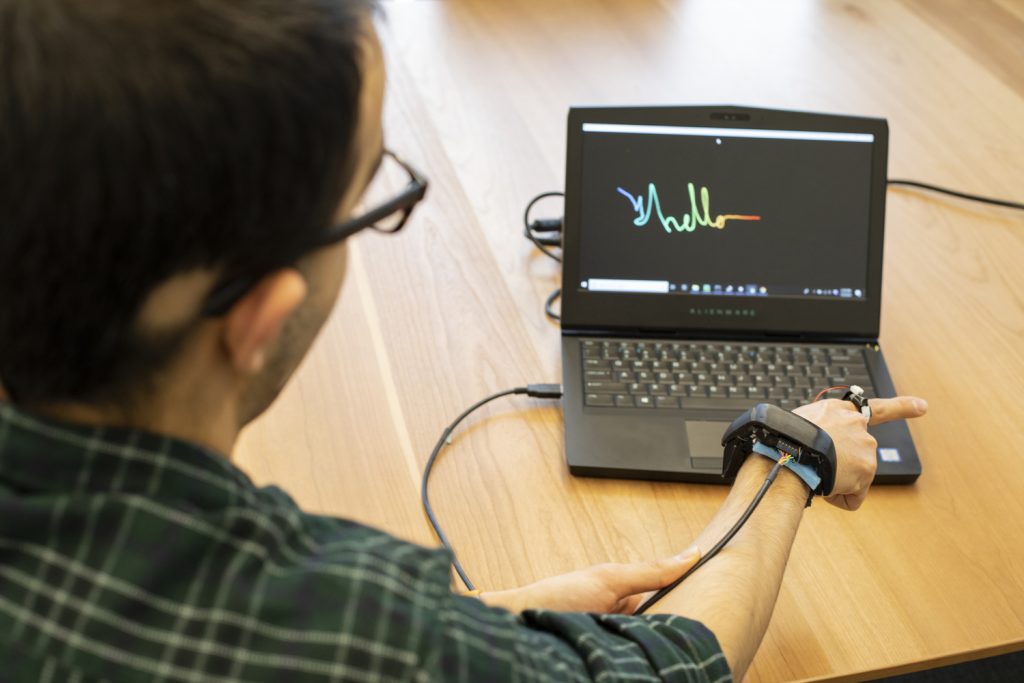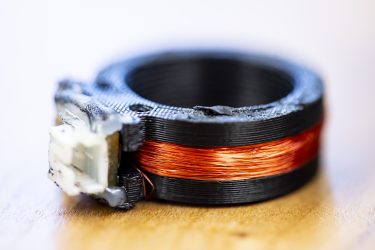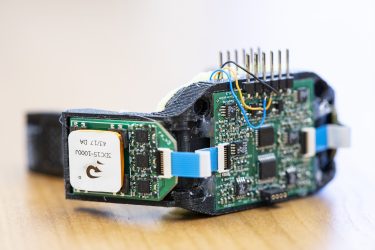
Sometimes a ring symbolizes a promise, sometimes it shows a person’s birth month or mood, and sometimes it’s a statement about their taste in jewelry. But thanks to researchers in the Allen School’s Ubicomp Lab, a ring can now do a lot more.
The latest in smart technology, the AuraRing is a ring and wristband combination with high-fidelity input tracking. The combination is a magnetic tracking system designed to report precise finger movement.
“We’re thinking about the next generation of computing platforms,” said Allen School alumnus and co-lead author Eric Whitmire (Ph.D. ‘19), now a research scientist at Facebook Reality Labs. “We wanted a tool that captures the fine-grain manipulation we do with our fingers — not just a gesture or where your finger is pointed, but something that can track your finger completely.”
The ability to track a finger enables freeform and subtle input for wearable platforms like smartwatches and augmented and virtual reality headsets. AuraRing enables applications like object manipulation, drawing, sliding, swipe-based text input and hand pose reconstruction because of its absolute, continuous tracking with millimeter-level accuracy. Due to a high bandwidth and data rate, AuraRing is also capable of detecting taps of various intensities which enables new kinds of always-available ambient interfaces.

The system, which is worn on the index finger, consists of a single transmitter coil tightly wrapped around a 3D-printed ring and a wristband with three embedded sensor coils that measure the resulting magnetic field. Using these measurements, the wristband tracks the absolute position and orientation of the ring in real-time, making free-form drawing, handwriting short text messages, controlling games and moving virtual objects with mixed reality headsets possible.

AuraRing is also a low-power, battery operated device that generates an oscillating magnetic field around the hand. By focusing on short-range tracking over distances between 10 and 15 centimeters, the system is less susceptible to using up too much power and encountering environmental interference.
“To have continuous tracking in other smart rings you’d have to stream all the data using wireless communication. That part consumes a lot of power, which is why a lot of smart rings only detect gestures and send those specific commands,” said co-lead author Farshid Salemi Parizi, a Ph.D. student in electrical and computer engineering. “But AuraRing’s ring consumes only 2.3 milliwatts of power, which produces an oscillating magnetic field that the wristband can constantly sense. In this way, there’s no need for any communication from the ring to the wristband.”
With these minimal, low-power electronics, AuraRing can operate for about a day on self-contained batteries and therefore has the potential to do a lot more.
“Because AuraRing continuously monitors hand movements and not just gestures, it provides a rich set of inputs that multiple industries could take advantage of,” said professor Shwetak Patel, who holds a joint appointment in the Allen School and the Department of Electrical & Computer Engineering. “For example, AuraRing could detect the onset of Parkinson’s disease by tracking subtle hand tremors or help with stroke rehabilitation by providing feedback on hand movement exercises.”
AuraRing was developed with support from the UW Reality Lab.The team, which has open-sourced the hardware designs and algorithms for their work, published their findings in Proceedings of the ACM on Interactive, Mobile, Wearable and Ubiquitous Technologies. To learn more, watch the group’s video and check out the UW News release and coverage by KING 5 News and VentureBeat.

